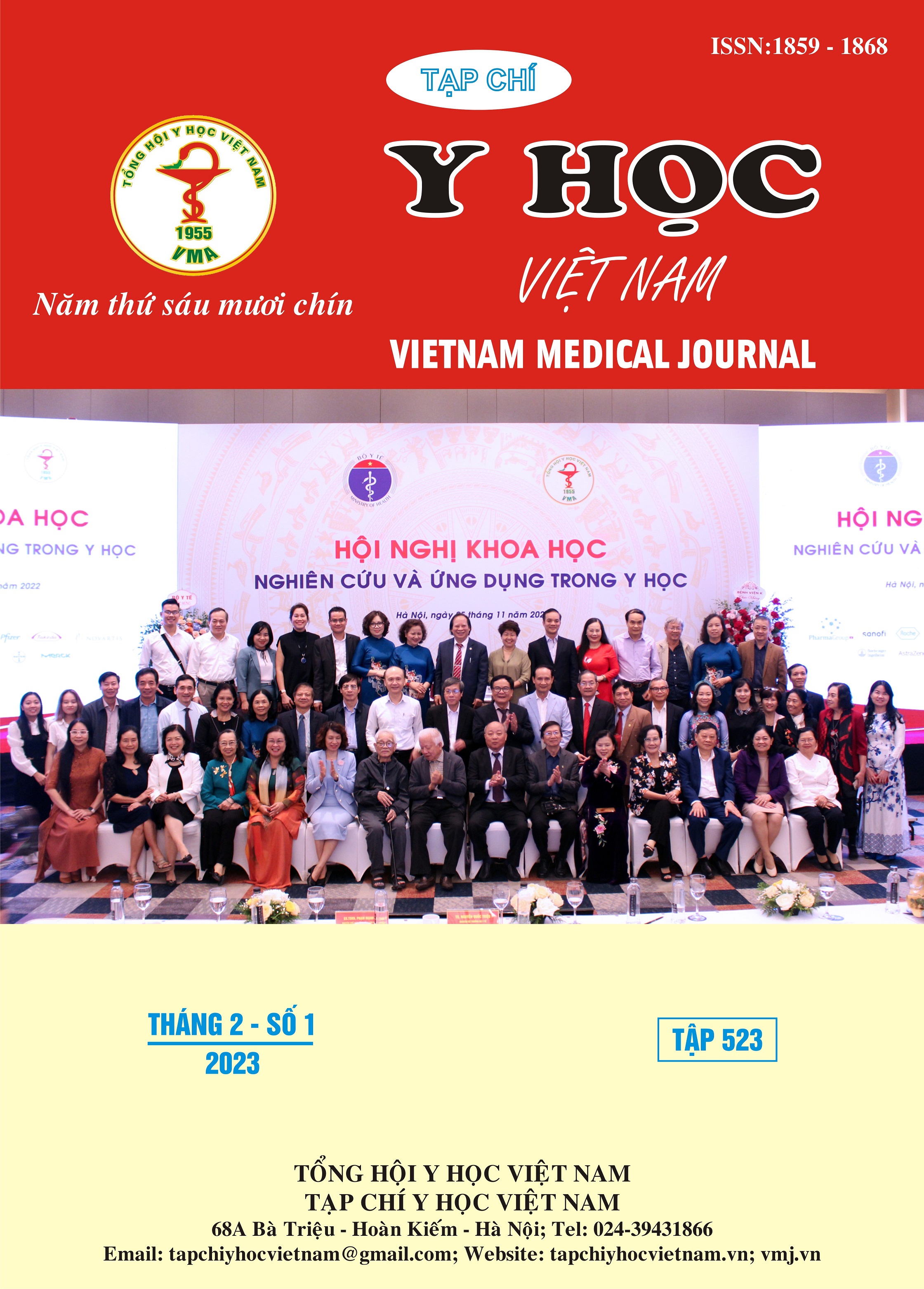ASSESSMENT OF THE ANATOMY, FUNCTION AND AESTHETIC RESULTS OF CLOSED REDUCTION METHOD IN TREATMENT OF ZYGOMATICOMAXILLARY COMPLEX FRACTURE
Main Article Content
Abstract
Background: Complicated cheekbone fractures with little or no displacement are usually treated without surgical intervention, while fractures with functional or cosmetic effects in the form of diplopia, extraocular muscle entrapment, malocclusion, limited mouth opening, and/or zygomatic arch depression often require surgical intervention. Objective: To evaluate the results of aesthetic functional surgery after treatment of patients with cheekbone fractures by means of cheekbone correction through the maxillary sinus. Materials and methods: All 49 patients with zygomatic fractures were examined and treated with cheekbone correction through the maxillary sinus at Hau Giang Provincial General Hospital from February 2019 to June 2020. Descriptive cross-sectional study with analysis and clinical intervention without control group. Results: - The percentage of patients with good anatomical assessment before discharge was 83.7%, 89.8% after 1 week of discharge and 91.8% after 3 months of treatment. - Patients had good function before treatment is 85.7%, after 1 week of discharge is 95.9% and after 3 months of treatment is 98.0%. - Hospital discharge is 77.6%, 1 week after discharge is 83.7% and after 3 months of treatment is 87.8%. Conclusion: The method of correcting cheekbones through the maxillary sinus is a minimally traumatic surgical method that provides good aesthetic function.
Article Details
Keywords
anatomy, function, aesthetics, cheekbone correction through the maxillary sinus
References
2. Lê Minh Thuận (2018), Nghiên cứu đặc điểm lâm sàng, hình ảnh học và đánh giá kết quả điều trị gãy phức hợp gò má bằng phương pháp nâng gò má qua xoang hàm tại bệnh viện Đa khoa Trung ương Cần Thơ năm 2016-2018, Luận văn Bác sĩ Nội trú, Trường Đại học Y Dược Cần Thơ.
3. Nguyễn Danh Toản (2010), Nhận xét đặc điểm lâm sàng, cận lâm sàng, X - quang và kết quả điều trị gãy xương gò má cung tiếp bằng nẹp vít tự tiêu, Luận tốt nghiệp Bác sĩ chuyên khoa cấp II, Trường Đại học Y Hà Nội.
4. Huỳnh Thanh Trung (2017), Nhận xét đặc điểm lâm sàng, cận lâm sàng và kết quả phẫu thuật gãy phức hợp gò má - cung tiếp bằng hệ thống nẹp vít nhỏ tại bệnh viện Răng Hàm Mặt Trung ương Hà Nội năm 2016-2017, Luận án Bác sĩ chuyên khoa II, Trường Đại học Y Hà Nội.
5. Phạm Hoàng Tuấn (2017), "Kết quả điều trị kết hợp xương gò má cung tiếp bằng nẹp vít tự tiêu", Tạp chí Y học thực hành, Tập 1053, Số 8/2017, tr. 5-7.
6. Cinpolat A, Ozkan O, Bektas G, Ozkan O (2017) Closed reduction of zygomatic tripod fractures using a towel clip, Journal of Plastic Surgery and Hand Surgery, Volume 51, Issue 4,pp 275-279
7. Starch-Jensen T, Linnebjerg LB, Jensen JD. Treatment of Zygomatic Complex Fractures with Surgical or Nonsurgical Intervention: A Retrospective Study. Open Dent J. 2018 May 21; 12:377-387.
8. Ji SY, Kim SS, Kim MH, Yang WS. Surgical Methods of Zygomaticomaxillary Complex Fracture. Arch Craniofac Surg. 2016 Dec; 17(4):206-210


